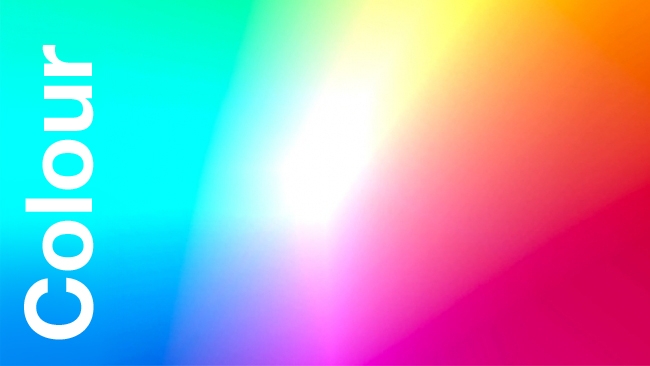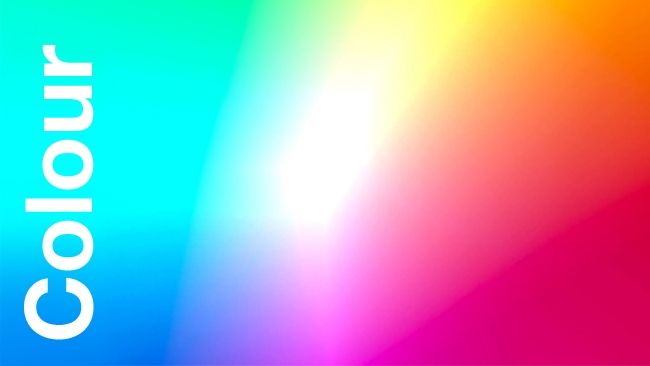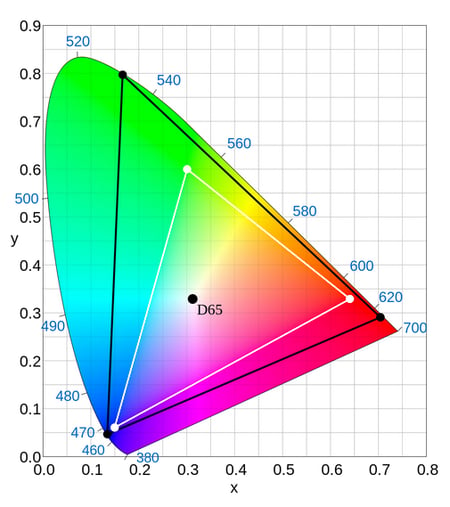
 The Future of Colour
The Future of Colour
Amid all the recent fuss over 4K, it's easy to get caught up in the enthusiasm over resolution. Shooting a video frame that's the size of a photo taken by a stills camera is no bad thing, of course, but colour and contrast are still the most eye-catching properties on an image. But now we know what the future holds for colour
4K for 2K
Many people, even now, are shooting 4K for a 2K finish even if they're not interested in future-proofing because of the drop in noise and increase in sharpness that can be had by downsampling such a large image. But there are also all kinds of potential problems, from the increase in the demands we're putting on lenses and focus pullers, to the increased precision with which production design must be done. After all, when you can see every brushstroke, one needs to be careful about how the inside of your high-value sci-fi spaceship is painted. It's easy to overlook the fact that that's something which has a cost to it just as much as better lenses or a focus puller who's more in touch with his inner zen. What actors who worry about not being in the first flush of youth think of this situation, I hate to think, but I've long heard people used to looking at video tapes decry conventional HD for being too sharp.
Colour Rendering
So, more pixels. Be quiet, now, film people. It's sharper than 35. Until recently, though, one area where video tended to fail horribly in comparisons to film was colour rendering. While in practice these things are quite carefully controlled, a cinematographer once had (and to some extent has) the option not only of more muted or more saturated negative stocks, but also the high contrast and saturation of reversal, with or without cross processing or other tricks. At presentation, a film projector can project any colour that happens to arrive in its gate. The colours of film are limited only by chemistry, albeit complex chemistry which is the subject of much research, whereas the colours available to digital systems need to be decided up-front, before cameras and monitors are designed with their built-in red, green and blue filters.
For this reason, we should welcome the arrival of ITU-R Recommendation BT.2020 (Rec. 2020), which became available last year. Much like the previous Recommendations 601 (for standard definition TV) and 709 (for HD), 2020 defines frame rates, pixel dimensions, and other aspects of a video signal at both around-4K and around-8K resolutions. Apart from the obvious, perhaps the headline feature of Rec. 2020 is the increase in colour gamut, particularly regarding green where previous standards have defined only fairly feeble, grassy colours. This was always done historically because the standardisation process was necessarily constrained by the devices which could actually be built using extant techniques, mainly those concerned with cathode ray tubes which could only produce the colours available from the phosphors which could be made. More recent technology provides much greater flexibility. The sad fact is that a lot of things in current practice are based on Rec. 709, from cameras to displays on computers, tablets and phones, which therefore suffer the same limited palette of greens as broadcast video.
The good news
So, things are looking up for highly saturated green and turquoise colours in 4K broadcasting, or specifically Rec. 2020 images. The particularly good news is that this has been done with a degree of restraint and the resulting system is not a minefield of complexity.
Most practical colour systems work in the familiar three RGB components, notwithstanding a few TVs which add yellow and cyan, mainly as a way of more completely covering Rec. 709. On a CIE diagram, which shows all colours visible to the human eye as a sort of horseshoe shape, any such three-primary system can be plotted as a triangular area, the shape and coverage depending on exactly which red, green or blue is specified. Colours within the triangular area can be represented by the colour system in question; colours outside it cannot.

This diagram shows the triangle described by the RGB primaries defined for Rec. 709, in white, and Rec. 2020, in black. The first and most obvious thing to notice is that the Rec. 2020 triangle is far larger, including slightly deeper reds and blues as well as vastly more capability in green. The other, perhaps slightly less obvious thing about the 2020 triangle is that its RGB primaries are all on the outer edge of the CIE diagram. This indicates that the 2020 primaries are entirely monochromatic (by the terms of the CIE 1931 standard to which the diagram pertains) and can be specified by a wavelength, as opposed to being a mixture of red, green and blue themselves. The Rec. 2020 primaries, on a graph of output over the visible spectrum, would be represented by a single vertical line, in the same way that a flute, approximating to a sine wave, would show up as a single line on an audio frequency chart. The result of all this is that the colour gamut available to Rec. 2020 compliant 4K displays is actually larger, in terms of percentage coverage of the CIE diagram, than that available to digital cinema.
More Ambitious Colour Rendering
Even so, the Rec. 2020 colourspace does not cover the entire CIE diagram. There are still colours visible to the human eye which cannot be represented. Some other, more ambitious colour rendering systems have tried to cover the entire CIE space by specifying RGB primaries that lie outside the horseshoe-shaped coloured area – in effect, redder than red, greener than green and bluer than blue. These imaginary colours are impossible to actually create, and cannot ever be viewed by anyone, but they do allow complete coverage. The problem is that it's impossible to actually build a display with which this colour system would work – by definition – because the RGB primaries it uses cannot ever actually exist. Any such system requires conversion before it can ever be displayed, which requires complex processing; avoiding this at the cost of some small exclusions from the available colour is probably a reasonable engineering compromise.
Problems with Colour Correcting the whole CIE Space
There are some more serious caveats to all this colour, though. The first potential problem is that with a larger range of colour, greater precision is required to store it digitally without quantisation artifacts – banding – becoming visible. Experiments have shown that an increase of just one bit over the traditionally 8-bit Rec. 709 is adequate to avoid the problem (on the basis that one bit doubles the range of values that can be stored), but in practice the document describes 10 and 12 bit formats for Rec. 2020 video. Both modes, but particularly the 12 bit, provides for greater precision than 8-bit Rec. 709, even with its more limited colour gamut, and the 12 bit modes will presumably find use in higher end production gear.
Quantel at IBC
As we saw at IBC, on Quantel's booth with their Pablo Rio colour grading system, 4K is still reasonably hard work, requiring lots of hardware and careful configuration, especially since the standard allows for frame rates up to 120p. Fractional frame rates such as 59.94 and 29.97 frames per second remain, irritatingly, though probably necessarily given a likely ongoing need to satisfy the majority of people who still haven't moved away from SD. Even a saner 60-frame video stream represents over 700MB/second of data, though, and if people want to keep using stereoscopic 3D, there's twice as many eyes and therefore twice the data. But with compressed systems providing 4K or Quad HD workflows that are easier and cheaper than ever, it may be worth wondering just how well your software and equipment handles not only the startling data rates, but also the extra colour information.
Sony's Solution
What's slightly unusual is that one of the first few displays actually capable of handling Rec. 2020 is likely to be Sony's 56” OLED, now shown at a few trade shows - if they can figure out how to make them in any way that's economically viable.
Obsession
With the current obsession with the density of pixels, some of this might see to be rather far off - but the important thing is that a standard now exists. It's something for broadcasters and manufacturers to work to. It remains to be seen - especially with the question of how many bits are available for each pixel - whether the move to 4K and beyond will do anything more than make the pictures look sharper.
Tags: Post & VFX


Comments